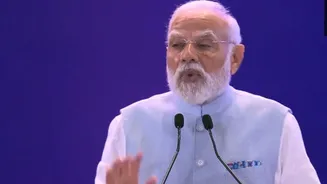A product of the people’s movement, Uttarakhand, a hill state with 10 hill districts and 3 plain districts, and projected to have a population of 1.25 crores by 2025, will complete twenty-five years on November
9, making it no longer a young state. Neglect in infrastructural development, medical facilities, educational and employment opportunities, isolation, migration of able-bodied youth, and the demand for a capital in the hills led to a significant people’s movement in 1994 for their own state. Uttarakhand was finally established with its temporary capital at Dehradun. The main reason for not choosing Gairsain over Dehradun as the temporary capital was the lack of infrastructure. Currently, ceremonial sessions are held in an assembly building constructed at Gairsain, but Dehradun remains the capital. As Uttarakhand approaches its twenty-fifth anniversary, it is crucial to assess whether the objectives for which even women sacrificed their lives have been met or if the hill regions still face the same issues.
Politically, in twenty-five years, Uttarakhand has seen ten chief ministers, starting from Nityananda Swami in 2000 to the current chief minister Pushkar Singh Dhami, who has been in office since 2021. Only Narayan Dutt Tiwari completed a full five-year term, indicating an unstable political landscape with internal rivalries and horse-trading within the BJP and Congress. The two-party system seems almost non-existent due to a leadership crisis in Congress and the tendency of leaders to frequently change affiliations. Socio-political divides based on caste and friction between hill and plain areas also impact the political scenario. The current regime’s adoption of strict anti-copying laws and the Uniform Civil Code has made Uttarakhand the first state in India to implement these measures. However, issues like copying, paper leaks, and recruitment scams affecting job opportunities for educated youth persist. The government supports startups in various fields through initiatives like Startup Uttarakhand Bootcamps, but these are mostly based in Dehradun or Haridwar. Although unemployment has decreased from 14.2% to 9.8% as per 2024-25 estimates, job opportunities in hill areas remain insufficient. Data from the Ministry of Education for 2024-2025 shows that 104.125 (lac) schools in Uttarakhand have only one teacher, reflecting locational disadvantages and reluctance to work in hill areas. The state’s leadership often emerges from student politics, resulting in a decline in the quality of higher education and nonproductive human resources. The recent declaration of creating 840 virtual classrooms in hybrid mode remains to be seen in action. Corruption issues, including land scams, land use changes, and unauthorised settlements, remain unchecked. The physical distance between Kumaun and Garhwal remains unchanged, causing problems for residents.
In terms of infrastructure, while new all-weather highways and ongoing railway development are noted, reports indicate that 6,000 villages with populations under 250 are still deprived of roads as per PMSY criteria. Many villages struggle with network issues, water scarcity despite the Har Ghar Nal scheme, and continuous electricity supply. Economically, Uttarakhand is projected to be one of the fastest-growing states with a GDP of 3,78,000 crore and a growth rate of approximately 6.61% for 2024-25, ranking 20th among Indian states. It stands at number 2 among smaller states in the utilisation and management of Central Government grants. Health services have improved, with 220 new doctors appointed in August and September 2025 for rural and remote hill districts, but accessibility to doctors and specialists remains an issue, leading to migration due to the lack of good educational and medical facilities. This situation has caused overcrowding in cities like Srinagar, Dehradun, and other plain areas, stressing resources and the carrying capacity of these regions. Dehradun, once known for its paradisiacal retired life, Basmati rice, and thick forests, is struggling to maintain its ecosystem amidst rapid development and the influx of people and traffic, further exacerbated by the six-lane Dehradun-Delhi Expressway.
Despite claiming to balance ecology and economy, Uttarakhand continues to face issues of unplanned infrastructural development, resource stress, increasing disasters, and climatic catastrophes. Construction on hill slopes, riverbeds, and ongoing mineral mining worsen the situation. Historically, movements like Chipko led by Gaura Devi have highlighted the need to protect the environment, but current practices overlook these lessons. The region has faced numerous disasters from the 1868 Chamoli landslide to the 2025 Dharali cloudbursts. The 2013 Kedarnath flash flood and landslide, which killed over 6,000 people, serve as a stark reminder of the consequences of ignoring natural laws. Recent disasters in Tharali and Dharali in 2025 have again highlighted the risks of constructing on riverbeds. Despite warnings, unauthorised constructions and mining continue, burdening the fragile region with heavy concrete buildings and modern amenities in areas like the vibrant village scheme for borderland villages and pilgrimage routes.
Tourism, the most lucrative source of employment for local people, needs a sustainable and eco-sensitive model. The number of rafting boats, high-rise buildings, tourists, pilgrims, Kanwars, and vehicles should be regulated as per carrying capacity and sustainability. To mitigate the impact of disasters, stringent rules need to be enforced, and faulty structures in dangerous locations should be demolished promptly. Authorities, politicians, rule-makers, and common people must work together to save the state from climate threats, ensuring its economy and people’s well-being. The silver jubilee of Uttarakhand offers an opportunity to introspect, discuss, and plan for a secure future. To become the number one developed state by 2047, serious preparation covering every sector over the next ten years is required. Instead of pretending to reform, genuine performance and transformation of the defunct system are essential for a bright future for all.
The Writer is Former Vice Chancellor and Professor of Political Science, HNB Garhwal, (Central) University, Srinagar, Garhwal, Uttarakhand. Views expressed in the above piece are personal and solely those of the author. They do not necessarily reflect News18’s views.















